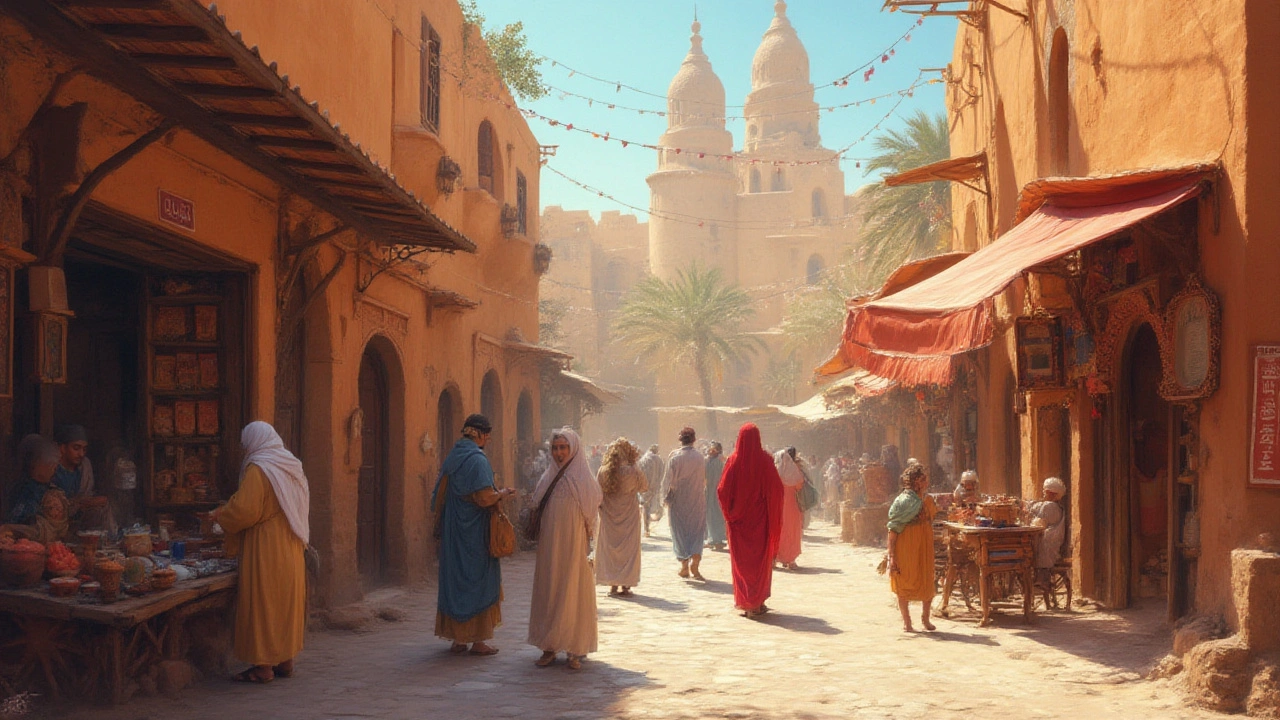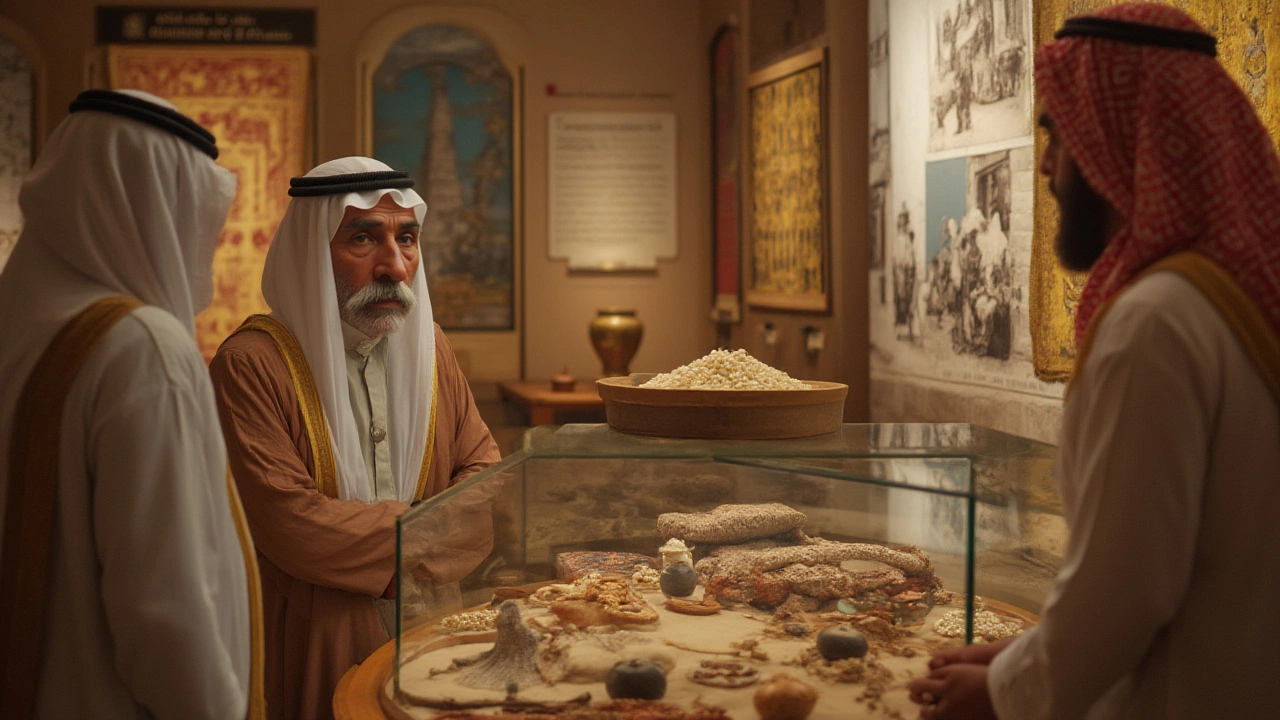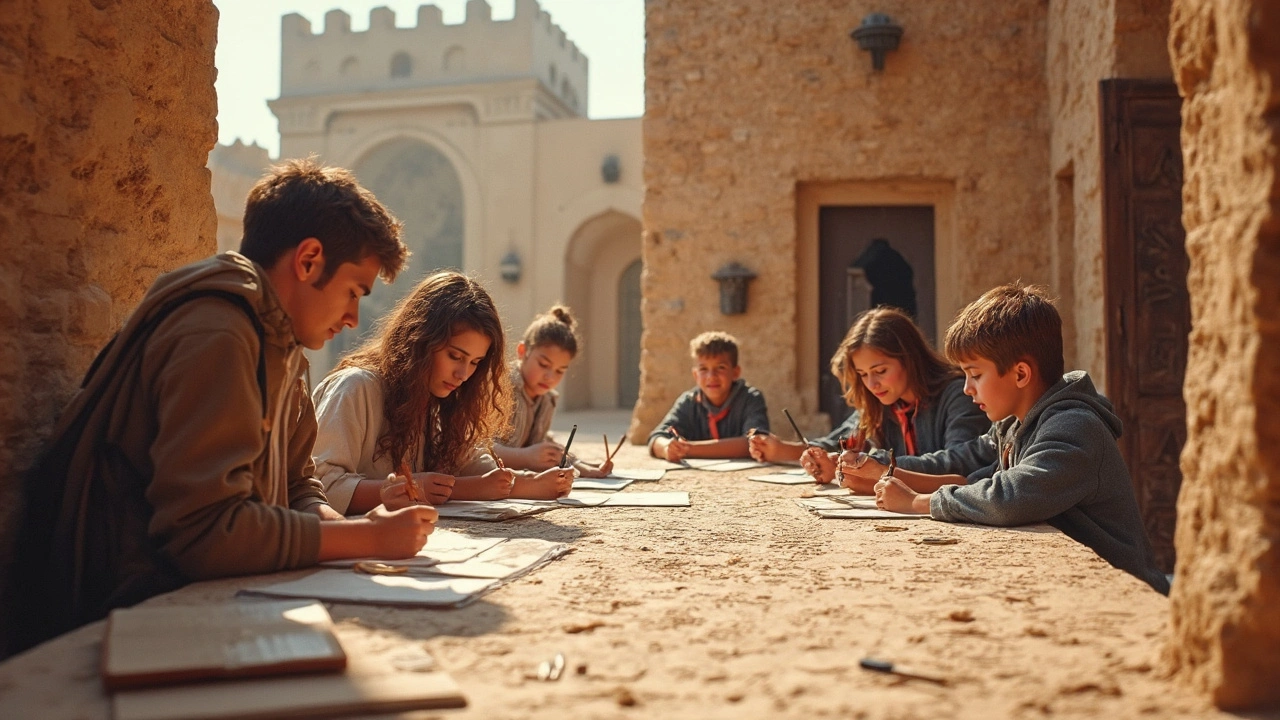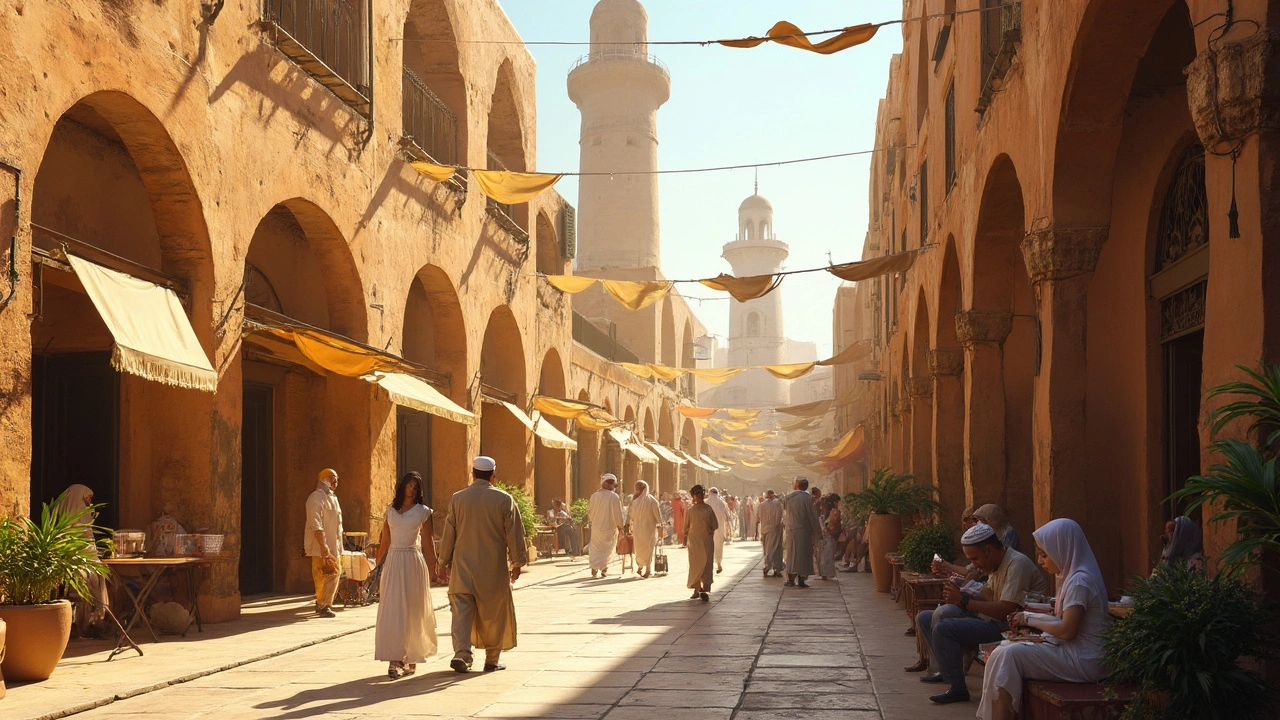Unforgettable Dubai Adventures: How to Experience Historical Sites Like a Local

If you’ve spent any time wandering through Dubai’s vibrant districts, you know the city isn’t just about glittering skyscrapers and luxury shopping sprees. Hidden in the quiet corners and sometimes right next to the biggest malls are astonishing slices of history begging to be explored. Dubai’s historical sites aren’t just for tourists with walking shoes and cameras—they’re gold mines of local culture and secrets, right here in the middle of the desert. But how do you actually make the most out of these spots without feeling like you’re ticking boxes on a travel blog? Here’s where things get interesting.
Discovering Dubai’s Timeless Landmarks: Ancient Stories in Urban Shadows
Start with the obvious: Dubai’s snazzy present stands on centuries worth of trading, migration, and unstoppable ambition. You don’t need to sign up for a boring guided tour with a whistle-blowing leader to get the best out of it. The Al Fahidi Historical Neighborhood—once just a cluster of wind towers and alleys—transports you far from the six-lane traffic on Sheikh Zayed Road. Wander the zigzag lanes early morning before the sun gets too bold; you’ll find art galleries tucked behind thick coral-stone walls and local artisans brewing coffee the traditional way, over hot coals. This isn’t some decorative setup. Emirati locals and longtime Dubai residents come here to reconnect with their grandparents’ way of living.
If you want your visit to count, talk to the folks at the Sheikh Mohammed Centre for Cultural Understanding. They offer not just Q&A breakfasts but honest conversations—curiosity is welcomed here, and no subject, from food to falcons to religious traditions, is off-limits. You’ll also want to check for small pop-up events around the district; Ramadan nights see the place come alive with traditional music, lantern-lighting, and plates of harees and luqaimat served up for public iftar.
Mosey across the creek—yes, on a wooden abra boat, which only runs you a dirham or two—and you’ll find yourself in Deira. While Dubai Gold Souk is the Instagram hero, the Deira Spice Souk works better for sparking all five senses. Saffron, dried lemons, frankincense—the air itself smells ancient. Learn to bargain (don’t worry, the banter is expected), and if you’re hungry, small family-run restaurants nearby serve up Emirati and Iranian dishes most tourists miss. History here isn’t just old buildings; it’s in the ways people greet, what they eat, and the stories sellers are eager to share.
Looking for a quieter moment? Head down to Jumeirah Mosque. As the largest mosque in Dubai open to non-Muslim visitors, it offers guided tours almost every day. You’ll catch the story behind the architecture, but also the reason why men and women dress a certain way at the mosque gates. There’s tea and dates offered at the end, so stay for a friendly chat. The guides—not just reading from a script—actually want to know where you’re from and what made you curious about Islam. It’s these conversations that unlock the real city, not just polished facts.
Ever heard of the Dubai Museum housed in Al Fahidi Fort? This place gets crowded, but timing is everything—lunchtime or late afternoon visits mean you’ll dodge the big groups. Interactive displays tell the story of Dubai from a sleepy fishing town to a world city, and kids trailing along actually find the reconstructed souk scenes fascinating. Did you know the museum’s fortification walls are built with coral rock and gypsum? Now you do, and it’s even better when you run your hand along the walls—each groove carved by people who built the city before oil or air conditioning.
Don’t ignore the lesser-hyped gems—the Etihad Museum, for example, is sleek and modern, but its interactive exhibits walk you through the signing of the UAE constitution. Perfect for anyone who wants the “why” behind all those stories of union and prosperity. The Dubai Heritage Village, although a bit theatrical at times, becomes worth it during UAE National Day or traditional celebrations, when live cooking, camel rides, and folk dances fill the grounds.

Practical Tips: Making the Most of Dubai’s Heritage, From Local Etiquette to Savvy Planning
First, pace yourself. The midday heat isn’t just talk—it really does bake the streets. Early mornings or post-4pm sessions are friendlier for your skin and your mood. Many indoor spots—museums, mosques, galleries—crank up the AC, but you’ll want a hat, water bottle, and loose, light clothes for comfort when you’re outdoors. If you’re keen on modest outfits or simply don’t want to stand out, pack a shawl or long-sleeved shirt, especially for mosque visits or older neighborhoods. You’ll notice respectful dressing goes a long way, not just for religion, but also for everyday interactions.
Booking tickets online for bigger attractions, like Etihad Museum or special historical walking tours in Al Fahidi, saves insane amounts of queue time. If you want a private guide, check out agencies like Arabian Adventures or Platinum Heritage, both of which offer well informed local guides, often born and raised in the Emirates. For the more spontaneous visitor, the RTA’s Dubai Ferry lets you spot historical landmarks from the water while dodging traffic jams—honestly, nothing beats watching Dubai’s evolving skyline from the creek at sunset.
| Landmark | Opening Hours | Entry Fee (AED) |
|---|---|---|
| Al Fahidi Fort/Dubai Museum | 8:30am - 8:30pm | 3 |
| Jumeirah Mosque | 10am, 2pm Guided Tours | 35 (guided) |
| Etihad Museum | 10am - 8pm | 25 |
| Dubai Heritage Village | Open during events | Free (events extra) |
Don’t just snap photos; linger and listen. Local security guards, shop owners, and museum staff delight in sharing personal memories—ask politely and they’ll often go out of their way to point out tiny details or hidden spots that most visitors overlook. My spouse Fiona was once invited for gahwa (traditional Arabic coffee) by a calligrapher setting up his stall in the Al Seef area—a moment that could easily have slipped by if we hadn’t stopped and shown real interest.
Food ties everything together. Grab a meal at Al Khayma Heritage Restaurant in Al Fahidi, where you’ll eat under a tent just like old Bedouins did. Or join a cooking class offering to teach local dishes—plenty of small hotels and even Dubai Creek resorts host workshops. Arabic coffee, dates, fish cooked in spicy blends—these are living parts of Dubai’s heritage that taste way better than anything you’d get in a food court.
Stay alert for cultural festivals—Dubai Shopping Festival, heritage village celebrations, or seasonal souk pop-ups in winter. Often, there’s street theatre, traditional sword dances, and handicraft workshops where you can get hands-on. This is the best chance to see Emirati youth celebrating heritage; yes, it’s proudly staged, but the spirit is absolutely contagious. For expats and other newcomers, these events are the smoothest pathway into social circles—locals love seeing genuine interest, especially over a bowl of machboos or a hand-decorated palm fan.
Another thing—don’t rule out using tech. Download the Dubai Culture app; it’s packed with real-time info, self-guided walking tours, and stories behind everything from old forts to modern-day majlis. Google Maps is updated with most of the city’s heritage sites, but often lacks the anecdotal details the local apps provide.
If you’re on a visa run, business trip, or just have a layover, squeeze in a heritage walk in the evening. The city is astonishingly safe, and the newer pedestrian bridges over the creek make late strolls a breeze. Yes, the humidity might get you, but the way the old city glows at dusk is worth every bead of sweat.

Beyond the Big Names: Hidden History and Unexpected Experiences
It’s tempting to tick off must-sees, but some of Dubai’s juiciest history lives in places rarely hyped in traditional tours. Alserkal Avenue, for instance, might look like an artsy warehouse district, but many exhibitions in their Project Space dig into archival photos, oral histories, and even poetry readings about the old Dubai. If your idea of history is not just ‘who sat on which throne’ but also the surge of creative energy after the oil boom, these spaces reveal the modern heartbeat of the city.
Then there are the UAE’s UNESCO World Heritage hopefuls. Out at Al Marmoom Desert Conservation Reserve, you can spot ancient petroglyphs and Neolithic burial mounds. Visit during the winter and you’ll often catch heritage camel races, plus open-air storytelling nights. No, you don’t have to camp under canvas like a survivalist—several eco-lodges offer guided trekking, traditional meals, and even stargazing nights with resident astronomers telling tales of Bedouin navigation.
Ever heard of the pearl diving villages in Dubai’s coastline? In a corner of the old Shindagha district, the Dubai Pearl Museum and the Perfume House both pop up as surprising deep dives into two industries that built this city long before the world knew it for oil. Sign up for a museum-led story walk, and you’ll learn about the daring lives of divers, and why a single perfect pearl could fund a family for a year. These stories don’t just sit on plaques—seasoned Emirati guides often lived them firsthand, or know someone who did.
Sometimes, the best history lessons happen by accident. Miss your taxi and you might end up chatting with a driver whose granddad watched the first dhow boats bring in spices from India. Stay curious—Dubai’s people, not just its buildings, make the history come alive.
If you’ve got little ones in tow, try heritage-themed scavenger hunts. The Dubai Culture app sometimes puts out citywide quests. My kids once had to identify traditional Emirati headwear and grab a selfie with a falconer—beats a boring museum worksheet any day. Dubai rarely does history in a hush-hush voice; it’s interactive, hands-on, and open-armed.
Shopping for souvenirs? Resist the pull of generic snowglobes. Instead, check out the Tashkeel Makers Shop or art fairs at the Courtyard Playhouse for prints, handwoven baskets, and jewelry made by homegrown designers. These reflect both the city’s history and its rapidly shifting identity.
And keep your eyes peeled for events like Dubai Art Season or Sikka Art Fair, both timed with spring coolness, where the city’s young artists showcase pieces inspired by their neighborhoods and family memories. This isn’t history in a dusty book—it’s heritage worn, painted, sung, and danced in broad daylight.
Visiting Dubai’s historical sites isn’t about memorizing facts or hunting the oldest brick. It’s about stepping into a living world where the old and new rub shoulders every hour. Whether you’re an expat, local, or just passing through, treat these sites less like exhibits and more like invitations. Ask questions, taste everything, linger a little longer. The city’s story may surprise you, and it just might change the way you see what’s possible in a place built out of the desert sand.

